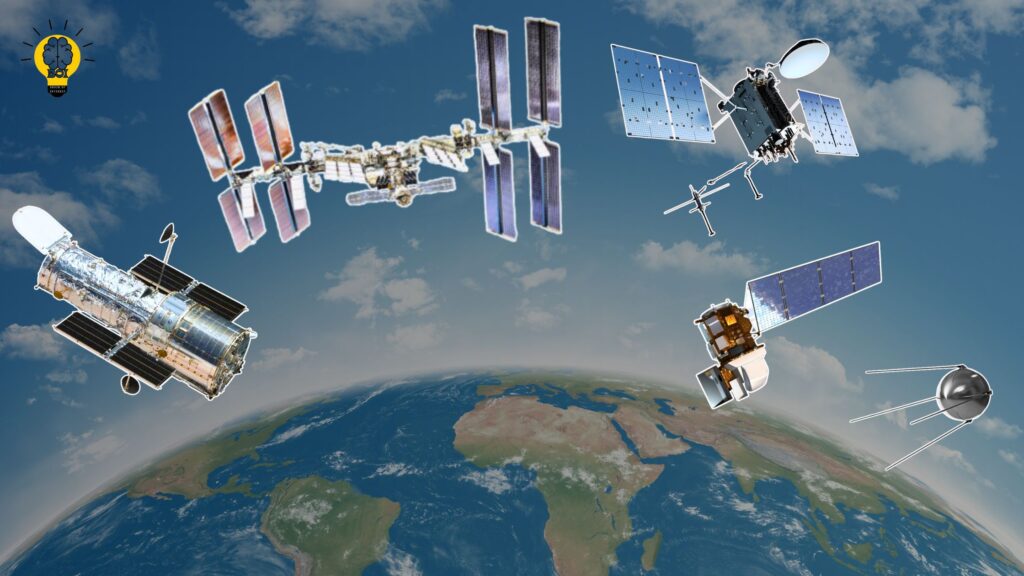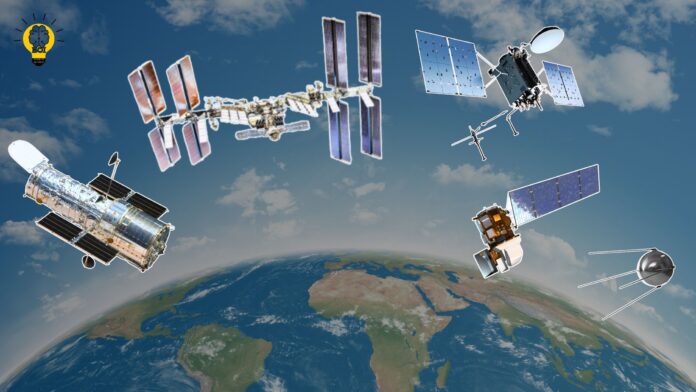Humanity has always been fascinated by space, and satellites have greatly advanced our understanding of it. From global communication to weather forecasting, these artificial satellites orbiting our planet provide vital information. Ever wonder which of the most well-known satellites are and why they are important? The Top 5 Famous Satellites in the World will be thoroughly examined in this article, along with their roles, purposes, and social significance. Let’s get going!
Table of Contents
Introduction: What Are Satellites?
Let’s start by resolving the simple query of what exactly a satellite is, before moving on to the well-known satellites. Anything that circles another object is a satellite. Although the moon is a natural satellite, the focus of this article will be artificial satellites, which are spacecraft built by humans that orbit the Earth or other celestial bodies. Satellites have merged into the common landscape, providing anything from mobile weather reports to tracking movements throughout the globe. When you find out which ones are the most well-known, are you ready? Come on, let’s get started!
1. Hubble Space Telescope: Our Eyes in Space
Amongst the most recognizable satellites in history is without a doubt the Hubble Space Telescope. Launched in 1990 by NASA, it has provided stunning images of the universe, revealing distant galaxies, nebulae, and even black holes. What makes Hubble so special? It orbits beyond Earth’s atmosphere, allowing it to capture images without distortion from air and weather, giving us a clearer view of space than ever before.
Think of the Hubble Space Telescope as a giant camera in space, constantly taking snapshots of the cosmos. Unlike ground-based telescopes that are often limited by weather conditions, Hubble works day and night, unaffected by clouds or light pollution. It has transformed our understanding of the universe, capturing images of star formations, exoplanets, and phenomena we never thought we’d see. The Hubble continues to be a key asset in space exploration, even after more than 30 years in service!
Key Achievements:
- Captured the first images of distant galaxies
- Provided vital data on the age of the universe
- Contributed to the discovery of dark energy
2. GPS Satellites: Guiding Us Everywhere
If you’ve ever used Google Maps or a car navigation system, you’ve benefited from GPS satellites. The Global Positioning System (GPS) consists of a network of over 30 satellites that orbit Earth, helping you find your way from point A to point B. Developed by the U.S. Department of Defense, GPS satellites are now used worldwide by civilians, businesses, and the military.
Have you ever thought of GPS satellites as invisible “tour guides” that know exactly where you are at all times? These satellites send signals to your phone or GPS device, allowing it to determine your location within a matter of feet. Whether you’re on a road trip or hiking in the mountains, GPS satellites are silently at work, making sure you stay on track.
Key Functions:
- Provide accurate global positioning
- Help track weather patterns and climate change
- Assist in military navigation and surveillance
3. International Space Station: Living in Space
The International Space Station (ISS) is unique because it’s not just a satellite—it’s a space laboratory where astronauts live and conduct experiments. The ISS orbits Earth at an average altitude of about 400 km and has been continuously inhabited since 2000. It’s a collaborative project involving space agencies from the U.S., Russia, Europe, Japan, and Canada.
The ISS is like a floating city in space, where scientists study everything from human biology to the effects of space on plants. The data collected aboard the ISS helps us understand how humans can live for extended periods in space, which will be crucial for future missions to Mars or beyond.
Key Features:
- Hosts astronauts for months at a time
- Conducts experiments on microgravity, biology, and technology
- Offers a platform for international scientific collaboration
4. Sputnik 1: The Satellite That Started It All
The first artificial satellite in history, Sputnik 1, was launched by the Soviet Union in 1957. This small, spherical satellite marked the beginning of the space age and triggered the space race between the U.S. and the USSR. Though it was only about the size of a beach ball and weighed 83 kg, Sputnik 1 was a significant milestone in human history.
Sputnik 1 didn’t do much by today’s standards—it simply transmitted radio signals back to Earth—but its impact was profound. Imagine being in the 1950s and hearing those signals from space for the first time; it was a moment that changed the world and made us realize that space exploration was possible.
Historical Importance:
- First artificial satellite to orbit Earth
- Kickstarted the space race
- Demonstrated the potential for space exploration
5. Landsat 8: Observing Our Changing Earth
Launched in 2013, Landsat 8 is part of the Landsat program, which has been observing Earth from space since 1972. Landsat satellites provide essential data for studying Earth’s natural resources, monitoring deforestation, and tracking the effects of climate change.
Think of Landsat 8 as a “photographer” of Earth, constantly snapping images that help scientists understand how our planet is evolving. From monitoring crop health to detecting natural disasters, Landsat 8 plays a crucial role in managing Earth’s resources and protecting the environment.
Contributions:
- Helps monitor global agriculture and forests
- Provides data for climate change studies
- Aids in disaster management by tracking floods, fires, and hurricanes
How Satellites Impact Our Daily Lives
Satellites have become so ingrained in our lives that we often take them for granted. From checking the weather to communicating with loved ones across the world, satellites are working behind the scenes 24/7. Whether it’s broadcasting TV shows, helping planes navigate, or predicting natural disasters, satellites are the backbone of our modern world.
- Everyday Uses of Satellites:
- Television and radio broadcasts
- Weather forecasting and climate monitoring
- Global communications and internet access

The Future of Satellites
As technology advances, satellites will only become more sophisticated. Future satellites are expected to be smaller, more powerful, and capable of performing more complex tasks. These advancements will enhance our ability to explore space, monitor Earth’s resources, and stay connected globally. The upcoming generation of satellites will likely include more environmentally friendly designs, making space exploration more sustainable.
Conclusion: The Ever-Evolving World of Satellites
Satellites are more than just objects floating in space—they are vital tools that impact nearly every aspect of our lives. Whether it’s the Hubble Space Telescope unlocking the secrets of the universe or GPS satellites guiding us on our daily commutes, these technological marvels continue to push the boundaries of what’s possible. As we look to the future, satellites will remain at the forefront of exploration, communication, and scientific discovery.
FAQs on Satellites
1. What was the first artificial satellite?
Sputnik 1 was the first artificial satellite, launched in 1957 by the Soviet Union.
2. How do GPS satellites work?
GPS satellites send signals to GPS devices, which use these signals to calculate the user’s exact location.
3. What is the Hubble Space Telescope used for?
The Hubble Space Telescope is used to capture detailed images of space, helping scientists understand the universe.
4. How is the International Space Station different from other satellites?
The International Space Station (ISS) is a living and working space laboratory where astronauts carry out research in a microgravity setting.
5. Why are Landsat satellites important?
Landsat satellites monitor Earth’s resources, track environmental changes, and provide data for climate change research.

